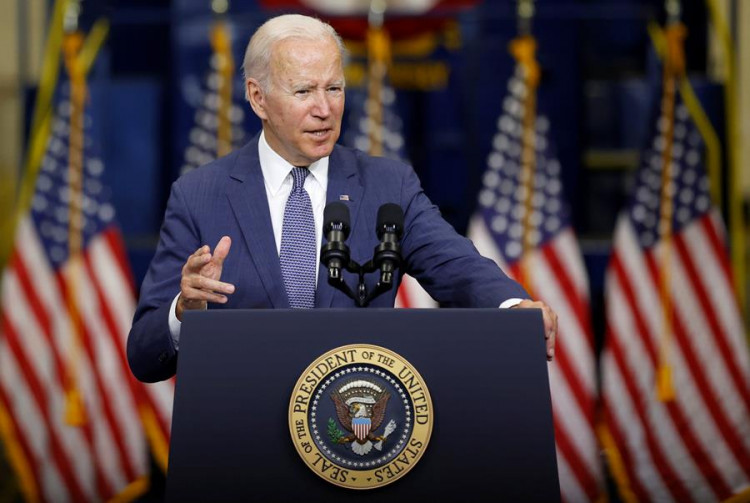For the first time since it initiated its credit rating for the United States in 1994, Fitch Ratings, one of the three major credit-rating agencies, downgraded the long-term foreign currency debt rating of the US from AAA to AA+ on Tuesday, August 1. The outlook was shifted from negative to stable, marking a major setback after twelve years.
Fitch's downgrade reflects its expectations of fiscal deterioration in the next three years and a continually growing overall government debt burden. The downgrade took place amidst a persistent bipartisan battle over the US debt ceiling, which repeatedly brought the issue of raising the debt ceiling to a standstill. Despite recent resolutions to the legislative impasse, it remains a potential problem in the future.
In June, both parties agreed to suspend the debt ceiling dispute until January 2025. However, Fitch noted the decline in the US's governance standards over the past twenty years, particularly in fiscal and debt issues. The recurring political stalemate over the debt ceiling and last-minute solutions undermine confidence in the US's fiscal management capabilities.
Fitch anticipates that the US general government deficit as a percentage of GDP will rise from 3.7% in 2022 to 6.3% in 2023, 6.6% in 2024, and further expand to 6.9% in 2025. Additionally, Fitch predicts that the Federal Reserve will further raise interest rates by 25 basis points in September, pushing the federal funds rate up to a range of 5.5% to 5.75%. The agency also suggested that the US economy could enter a "mild" recession in this year's fourth quarter and next year's first quarter due to tightening credit conditions, weak business investment, and a slowdown in consumer spending.
On May 24, during the heated US debt ceiling dispute, Fitch placed the US's AAA rating on the "Negative Watch" list and warned that it might downgrade the country's credit rating.
In early Asia-Pacific trading on Wednesday, August 2, S&P 500 futures fell 0.54%, Dow futures dropped 0.45%, and Nasdaq 100 futures declined 0.81%. US Treasury bond futures rose while the US dollar index, DXY, fell 25 points in early Asian trading. Spot gold rose to $1,950 per ounce.
US Treasury Secretary Janet Yellen strongly opposed Fitch's downgrade, calling it "arbitrary" and "outdated". Yellen emphasized her disagreement with Fitch's decision and asserted that the US government bonds remain the world's safest and most liquid assets and that the US economy is fundamentally strong.
She added that many of Fitch's concerns, including those related to governance, have been addressed in this administration as both parties have passed legislation to resolve the debt ceiling issue, invest in infrastructure, and make other investments to enhance US competitiveness.
Fitch, however, pointed out that, unlike most peers, the US federal government "lacks a medium-term fiscal framework" and has a "complex budget process". These factors, along with economic shocks, tax cuts under the Trump administration, and new spending measures, have led to a "continuous increase in debt over the past decade". The agency also noted that limited progress has been made in addressing challenges related to the rising costs of Social Security and Medicare due to an aging population.
Yellen stated that she and President Biden are committed to fiscal sustainability. The recent debt ceiling legislation includes over $1 trillion in deficit reductions and has improved the country's fiscal trajectory. Looking ahead, Biden has proposed a budget that would reduce the deficit by $2.6 trillion over the next decade through a balanced approach supporting long-term investment.
Media reports suggest that the Biden administration attempted to intervene before Fitch downgraded the US's credit rating. US government officials reportedly met with the agency's executives before the announcement was made to express their opposition. However, Biden administration officials anticipate that Fitch's downgrade will not affect the borrowing costs of the US government.
What happens after the US is downgraded?
This is the second time that the US has been downgraded, following Standard & Poor's downgrade in August 2011.
On August 5, 2011, Standard & Poor's announced that due to issues such as the debt ceiling crisis, it was downgrading the US's AAA long-term sovereign debt rating by one level to AA+, with a "negative" outlook. This was the first time since S&P began sovereign ratings in 1941 that the US had lost its AAA sovereign credit rating, breaking the nearly century-long myth of the US maintaining the highest rating. The immediate reaction then was a surge in global concern about a US debt crisis, heightened uncertainty in global markets, and a series of chain reactions and large fluctuations.
The situation may be worse now because only Moody's still maintains a AAA rating for the US among the three major rating agencies; both Fitch and Standard & Poor's have downgraded the US's credit rating to AA+. Market worries hint at potential turbulence in the US and even global financial markets on Wednesday.
David Croy, a strategist with ANZ Banking Group in Wellington, Australia, expressed that there could be two views in the market. On the surface, this is a stain on America's reputation and status, but if it exacerbates market tensions and risk-averse measures, it could easily trigger safe-haven buying of US Treasury bonds and the US dollar.






